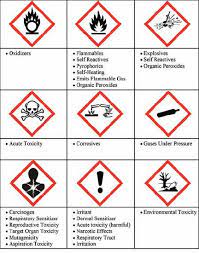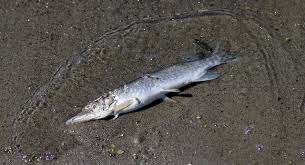The Nature, Origin and Identification of Hazardous Substances
A hazardous substance is any substance, whether solid, liquid or gas, that may cause harm to your health. Hazardous substances are capable of causing significant adverse effects to the environment or human beings.
A hazardous material is a substance or combination of substances which, because of its quantity, concentration, or physical, chemical or infectious characteristics, may either cause or significantly contribute to an increase in mortality or an increase in serious irreversible, or incapacitating reversible illness or pose a substantial present or potential hazard to human health or environment when improperly treated, stored, transported or disposed of or otherwise managed (WRSEC, 2014).
Under the Hazardous Substances and New Organisms (HSNO) Act 1996 of New Zealand, a hazardous substance is any substance that has one of the properties, such as an explosive nature, flammability, ability to oxidize (i.e. to accelerate a fire), corrosiveness, acute or chronic toxicity, ecotoxicity with or without bioaccumulation (i.e., can kill living things either directly or by building up in the environment); or ability to generate a hazardous substance on contact with air or water.
A substance is hazardous only if the level of any of these properties is above a threshold defined in regulations made under section 74 of the Act. Wherever possible, thresholds have been based on internationally recognized measures. The Act also controls compressed gas containers whether or not the gas itself is hazardous.
A good knowledge of hazardous substances involves identification, understanding of their nature, source and their classification.
Nature and Origin of Hazardous Substances/ Wastes
Hazardous substances are all-pervasive and are a result of most human activities e.g. agriculture, manufacturing, petroleum refining, hospitals and pharmacies, in the household etc.
They come in all shapes and forms: liquid, solids or sludges, and they include expired drugs, pesticides, dry and wet cell batteries, used engine oils, chlorine bleach, paints, thinners, nail varnish, shoe polish, aerosols, kerosene, gasoline etc.
Categories of household hazardous waste includes decorative paints, coatings and related products; garden chemicals and pet-care products; motoring products and household chemicals, materials and appliances.
Hazardous wastes are thus extremely dangerous materials that require the highest degree of care in handling, treatment and disposal.
Kiely (1998) observed that the public perception of hazardous wastes is that they are a problem and those that generate hazardous wastes must somehow be stopped from continuing or engaging in this nefarious practice.
However, most people fail to reckon with the fact that the generation of hazardous wastes is a part of everyday living in this consumerist society of ours. In other words, the public is afraid of these substances but uses them every day without realizing it.
On the contrary, what appears credible to most people is that hazardous wastes arise from manufacturing operations, petroleum and chemical processing and that they are nowhere related to our common day-to-day activities. This wrong perception of hazardous wastes tends to exacerbate the problem.
The Nature of Hazardous Substances
Apart from these ones, there are other hazardous substances that do not belong to any of the groups mentioned above. Such hazardous substances are referred to as miscellaneous hazardous substances. Hazardous substances are often known as dangerous goods.
Read Also : Complete List of Recyclable Wastes (Waste Recyclables)
Hazardous substances take various forms. They may take the form of gases, explosives, flammable and combustible solids and liquids. Some hazardous substances take the nature of oxidizing substances organic peroxides, toxic substances, infectious substances and corrosives.
Hazardous wastes have also been defined as wastes or a combination of wastes that pose a substantial present or potential hazard to humans or other living organisms because such wastes:
– Are non-degradable or persistent in nature;
– Can be biologically magnified i.e., their concentration can increase at consecutively higher trophic levels in an ecosystem;
– Can be lethal; or;
– May otherwise cause or tend to cause detrimental cumulative effects.
Cunningham and Saigo (2001) gave a more embracing definition of hazardous wastes. According to them, a hazardous waste means any discarded material containing substances known to be toxic, mutagenic, carcinogenic, or teratogenic i.e. causing birth defects to humans or other life forms. Such material is also ignitable, corrosive, explosive or highly reactive alone or with other materials.
Similarly,
– Containing significant quantities of a substance or substances which may cause danger:
– To the life of living organisms when released into the environment;
– To the safety of humans or equipment in disposal plants if incorrectly handled; and
– Or have the potential for severely polluting and damaging the environment.
All these definitions suggest the ubiquitous nature of hazardous substances. It is found in our homes, factories, workplaces, and farms and in the natural environment (Kiely, 1998).
A hazardous substance is also defined as one that is persistent, bioaccumulative and is toxic, or gives rise to an equivalent concern. A substance is said to be bioaccumulative if the bioconcentration factor for aquatic species on a wet weight basis is greater than 2,000. Toxic substances can be defined as broad group of chemicals capable of causing harm to plants and animals including humans.
Toxic compounds have been grouped into five categories: atmospherically-deposited compounds; organic and inorganic contaminants that result from industrial, manufacturing or other point and non-point discharges from facilities; pesticides; contaminants of emerging concern (CECs); and biological contaminants.
Infectious substances are substances known or reasonably expected to contain pathogens. Pathogens are defined as micro-organisms (including bacteria, viruses, rickettsiae, parasites, fungi) and other agents, such as prions, which can cause disease in humans or animals.
However, corrosives are materials that can attack and chemically destroy exposed body tissues. Corrosives can also damage or even destroy metals.

They begin to cause damage as soon as they touch the skin, eyes, respiratory tracts, digestive tracts, or metals. They might be hazardous in other ways, too, depending on the particular corrosive material.
Origin of Hazardous Substances
Hazardous substances are common to find. They are found almost everywhere. Their sources are everywhere around us. They can be found in the home, workplace, and roadways, industrial or commercial areas. Even some products we use daily contain some hazardous substances in them.
Examples include the kitchen where you have petroleum products, such as kerosene, cooking gas, oven cleaners, drain cleaners, ammonia bleach etc.
Other areas are the laundry bleach, spot removers, cleaners etc. as well as garage- petrol (gasoline), solvents, pesticides, paints, pain removers, thinners etc. These products, when mishandled, constitute household hazards.
According to a study carried out by the Department of Environmental Health and Safety, University of Texas at Dallas in 2012, “almost everyone works with or around chemicals and chemical products every day.
Chemical safety is inherently linked to other safety issues including engineering controls, laboratory procedures, personal protective equipment, electrical safety, fire safety, and hazardous waste disposal.
Many chemicals have properties that make them hazardous: they can represent physical hazards (fire, explosion) and/or health hazards (toxicity, chemical burns, and dangerous fumes).
However, there are many ways to work with chemicals which can both reduce the probability of an accident and minimize the consequences should an accident occur” (UT Dallas, 2012).
Identification of Hazardous Substances
There are a number of ways in which hazardous substances can be identified. To identify if a substance is hazardous, check the product’s container label and/or the safety data sheet (SDS) which is available from the supplier.
If a product is not classified as a hazardous chemical under the Queensland Work Health and Safety Act 2011, an SDS is not required and, therefore, may not be available. If you are unsure, always check with the product’s supplier.
The labels of hazardous chemicals usually contain the words “danger‟ or “warning‟, along with relevant pictograms and details of hazards.
However, in industrial and commercial sites, most buildings that contain hazardous substances are identified by the National Fire Protection Association 704 Diamond system. This is located at entrance to the building.
The system is divided into four quadrants. Each has a special meaning and is coded with a colour. The top quadrant is coded red meaning fire hazard, the right is coded yellow for reactivity, and the left quadrant is coded blue for health hazards, while the bottom quadrant is coded white for information on special hazards of particular chemicals.
Each coloured quadrant bears numbers from zero to four showing the degrees of hazard from zero to four, with four being the greatest hazard.
Read Also : Hurts Wastewater Management Complete Guide
Also, to identify a hazardous substance, there should be a careful observation of the container. For hazardous items transported on roadways, they carry a Department of Transportation (DOT) label on the package.
The labels bear different colours signifying varying degrees of hazards. Orange colour signifies explosive, red-flammable gas and liquid, white poison, black/white corrosive, yellow oxidizer, green non-flammable gas, and yellow/white radioactive.



